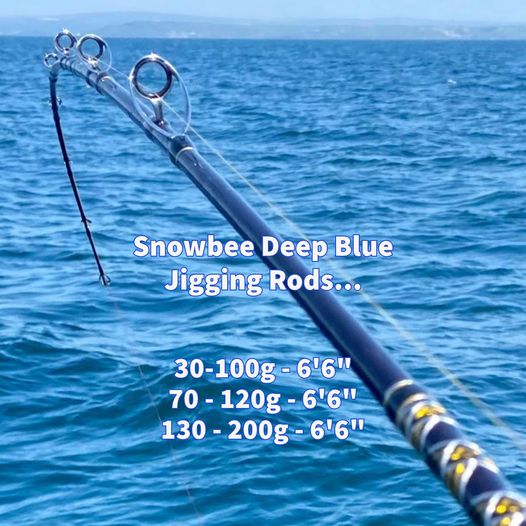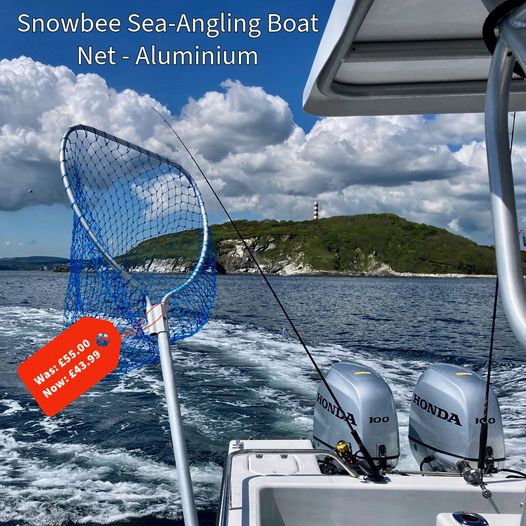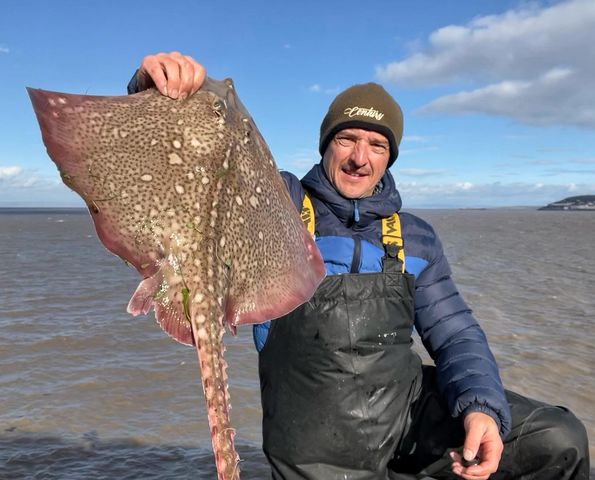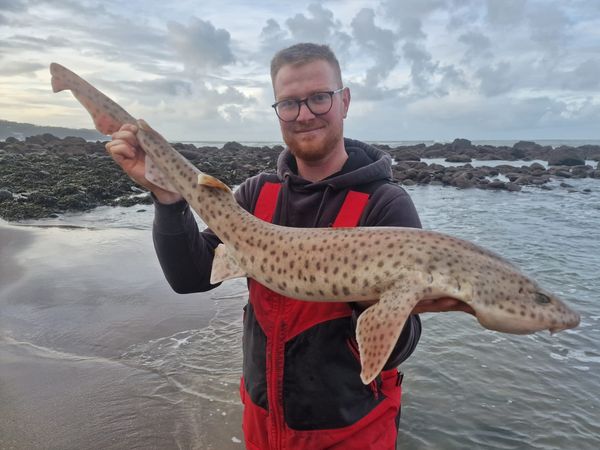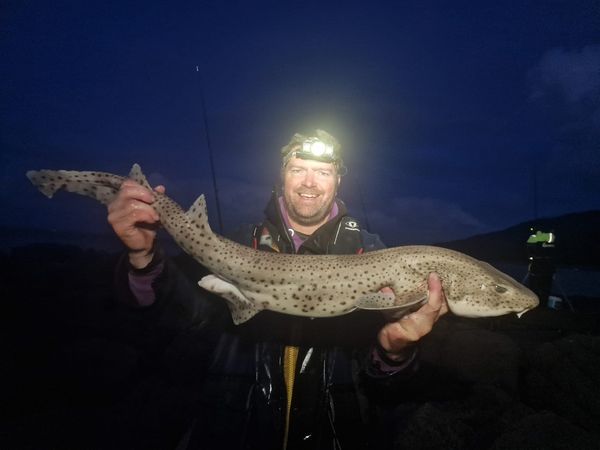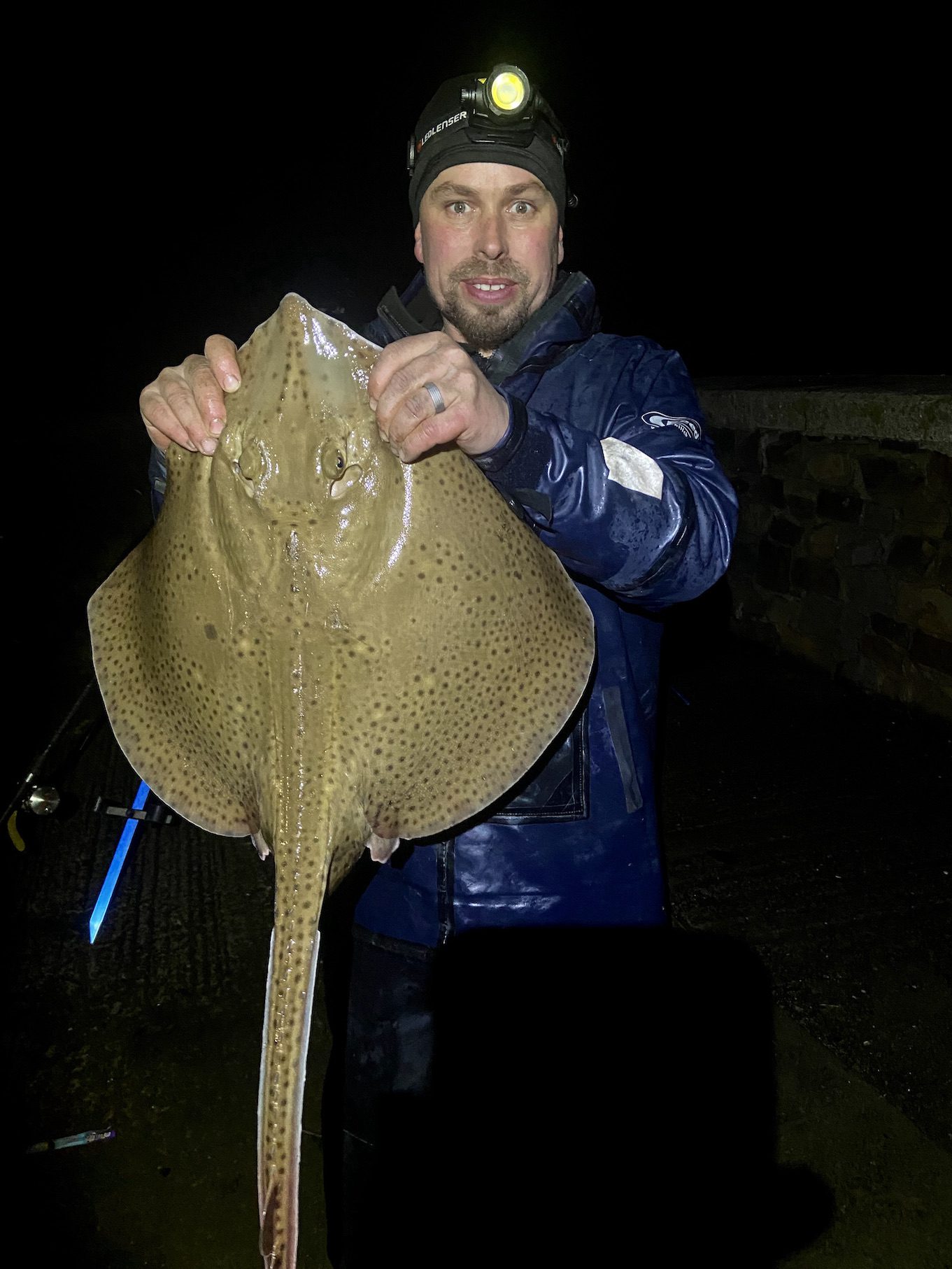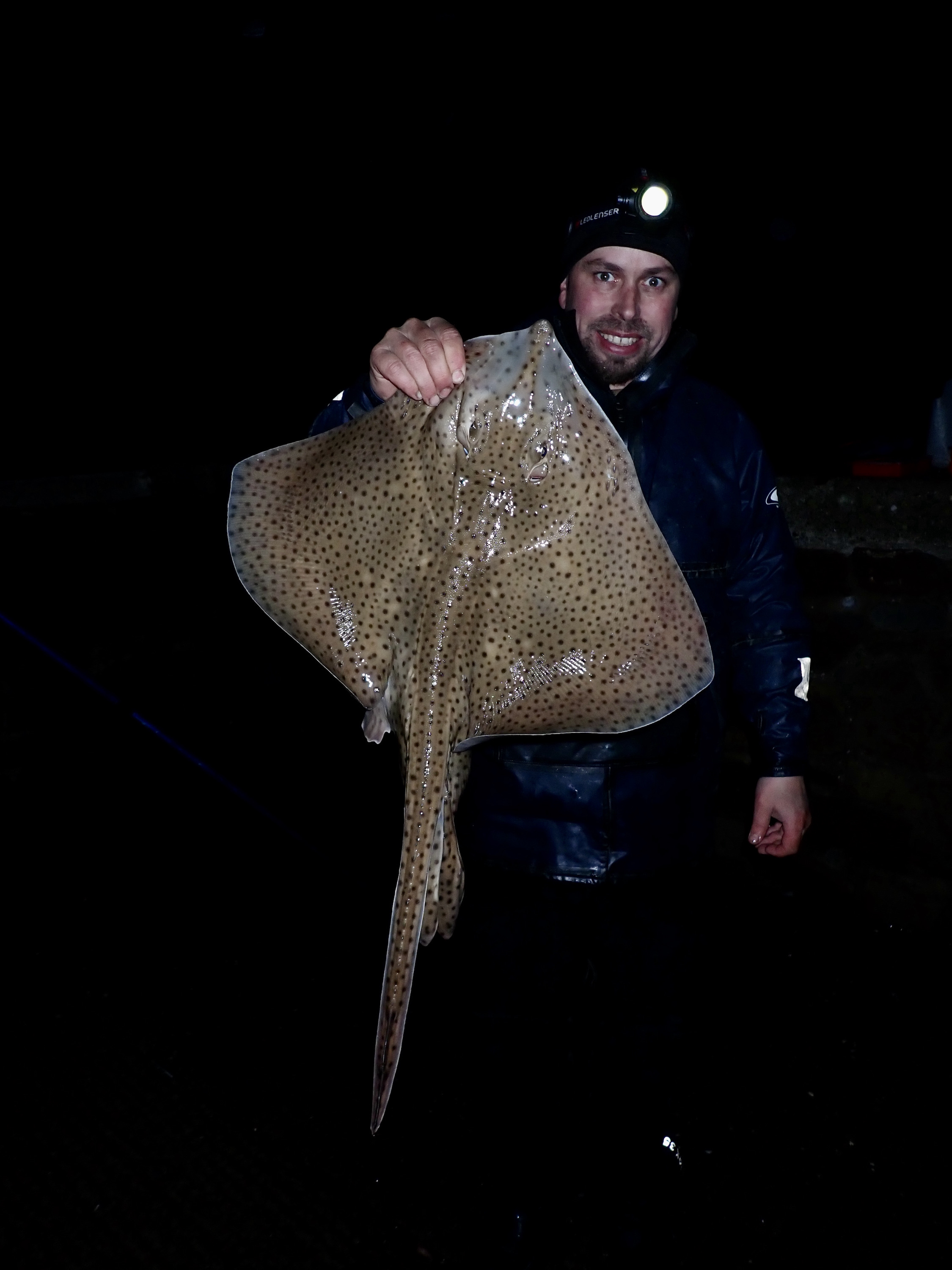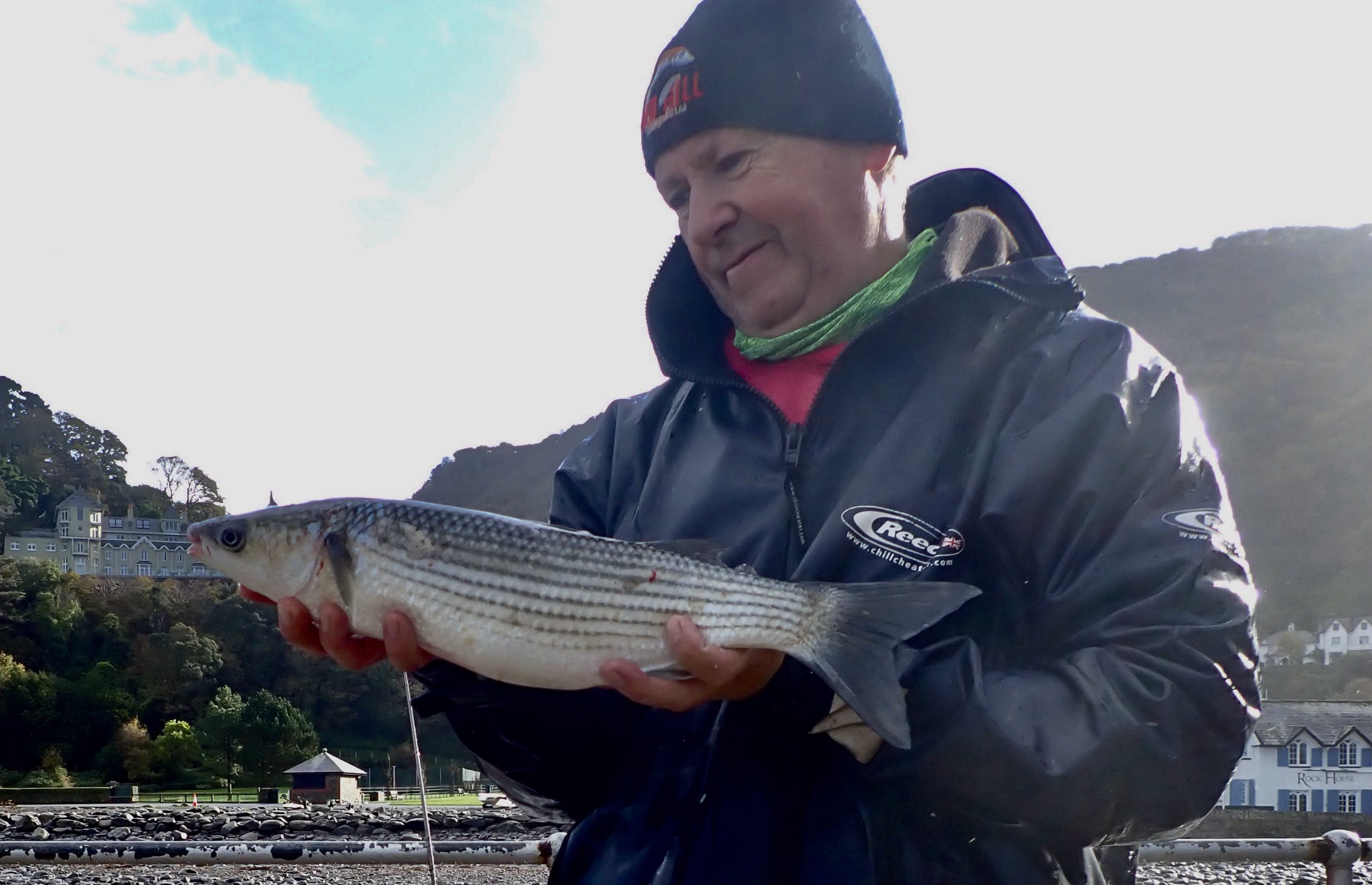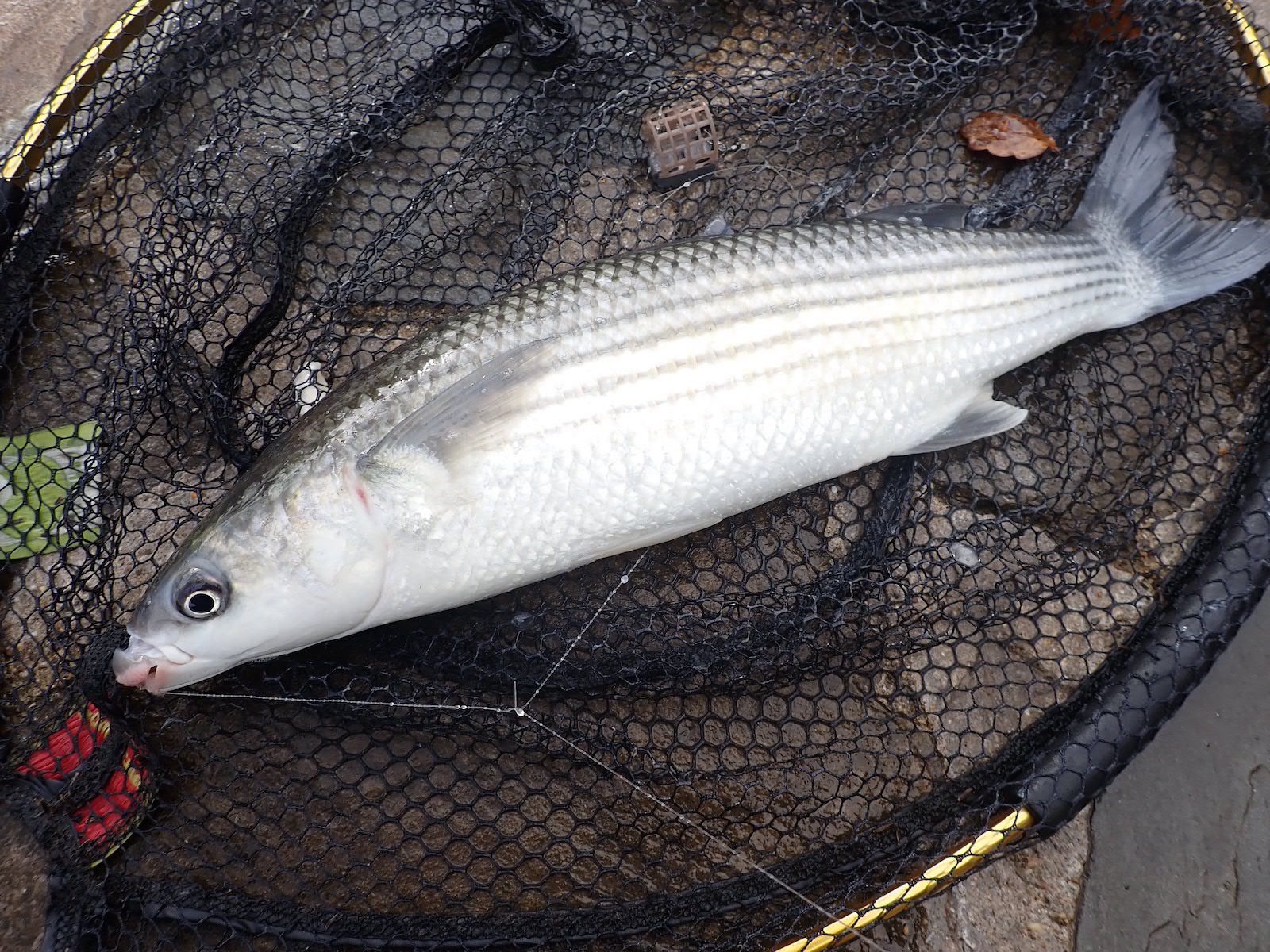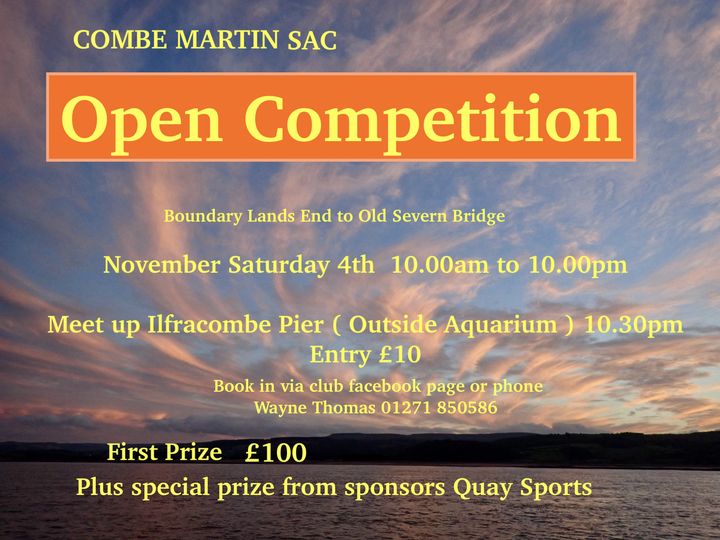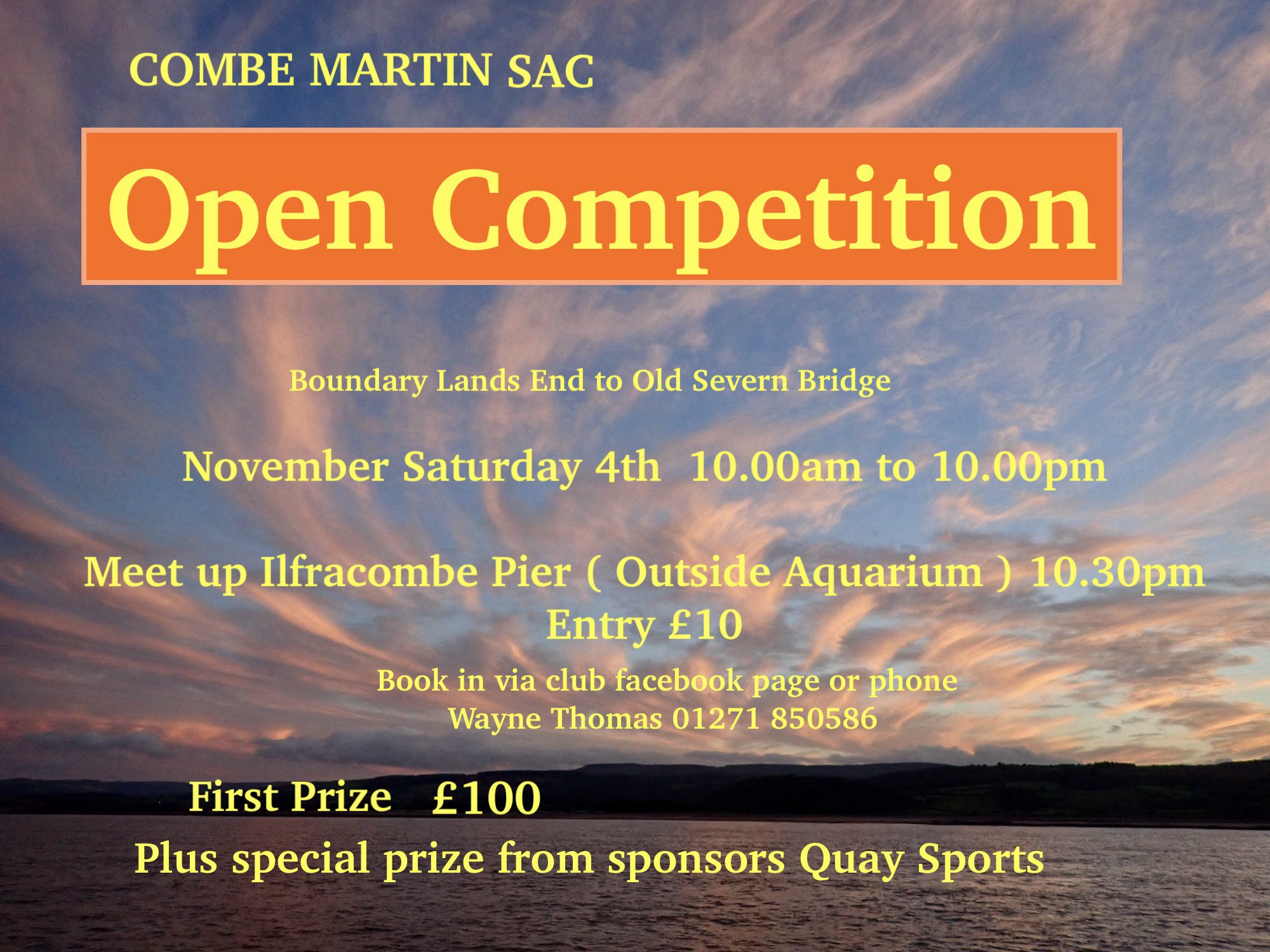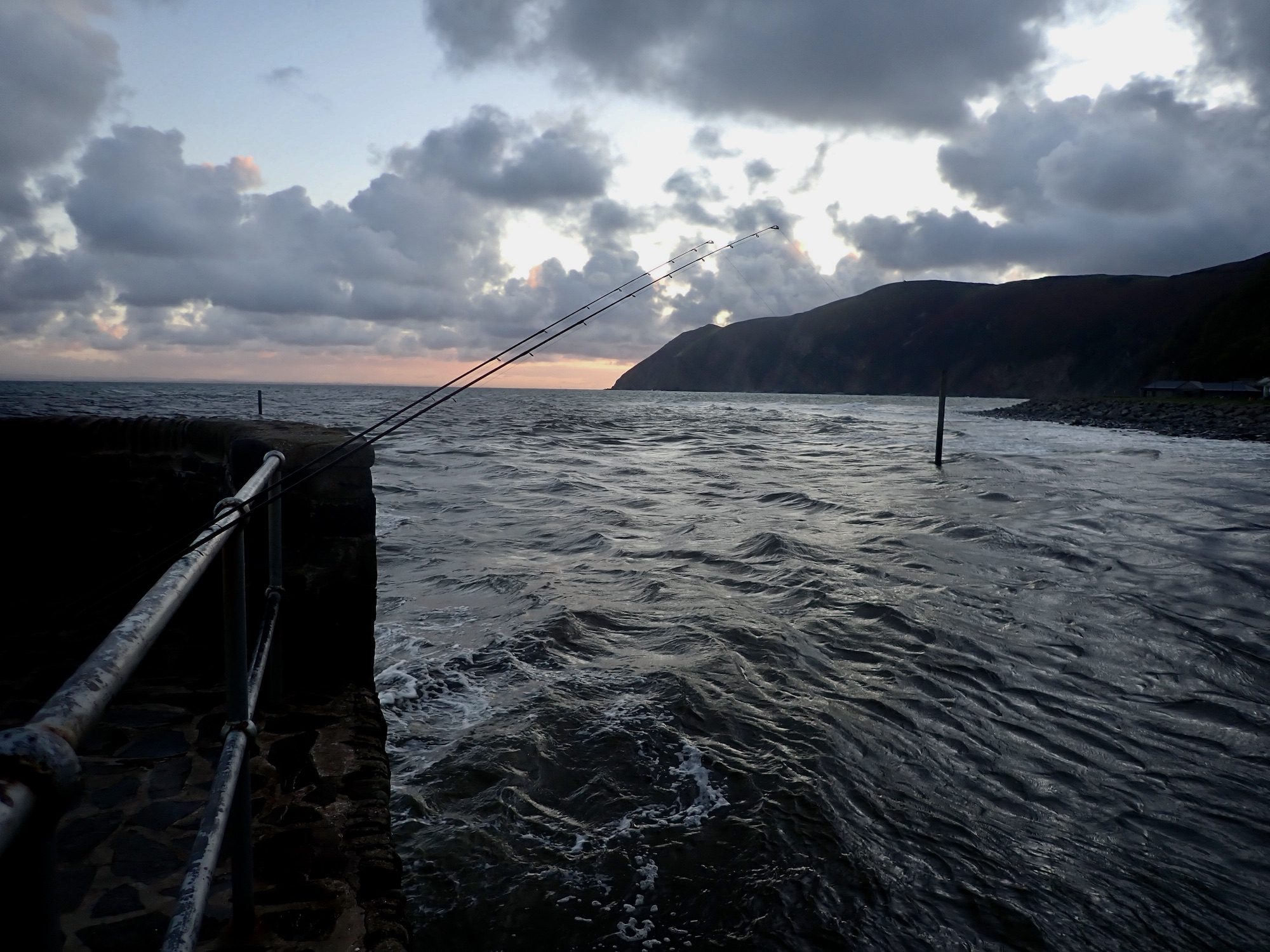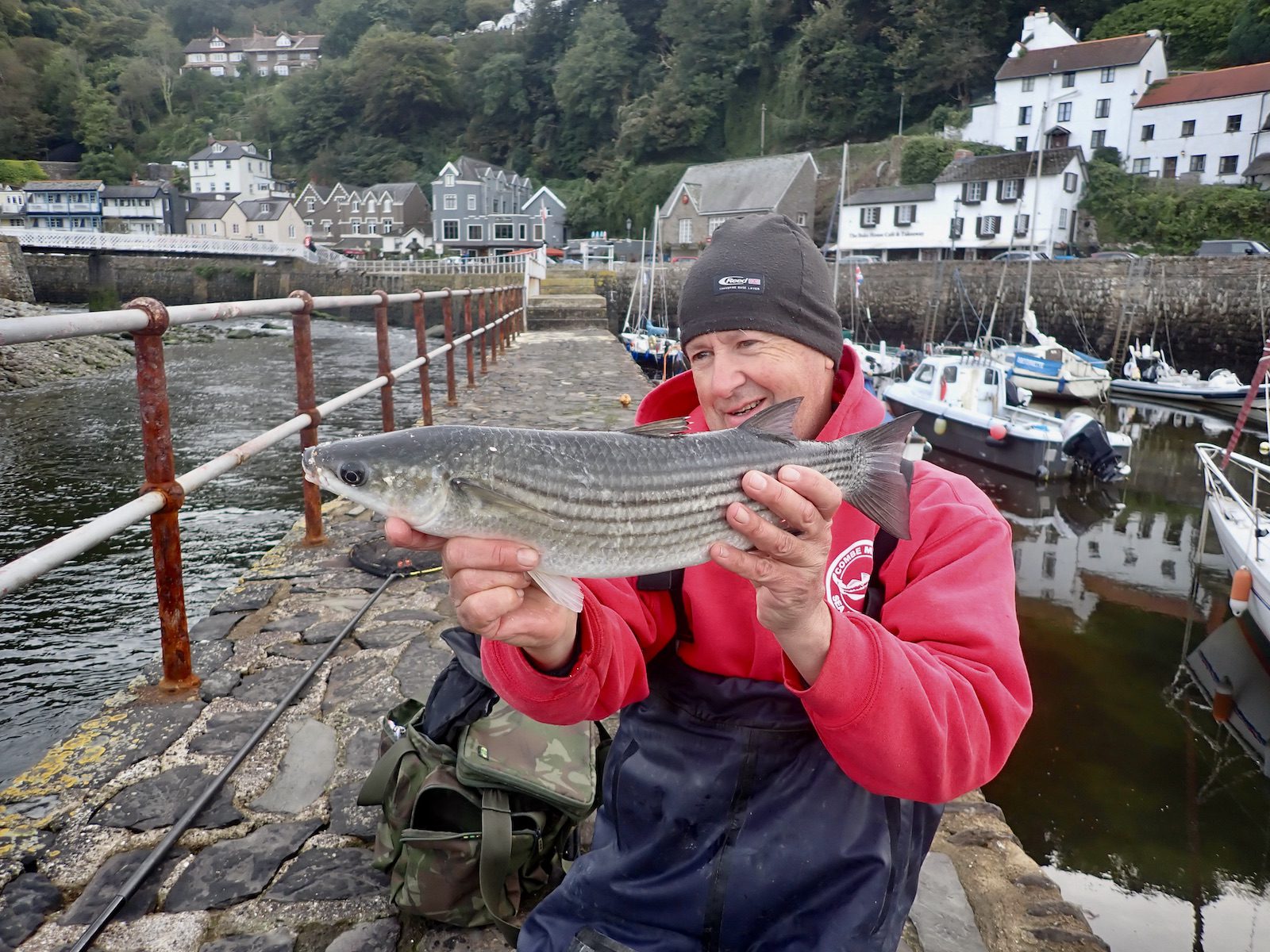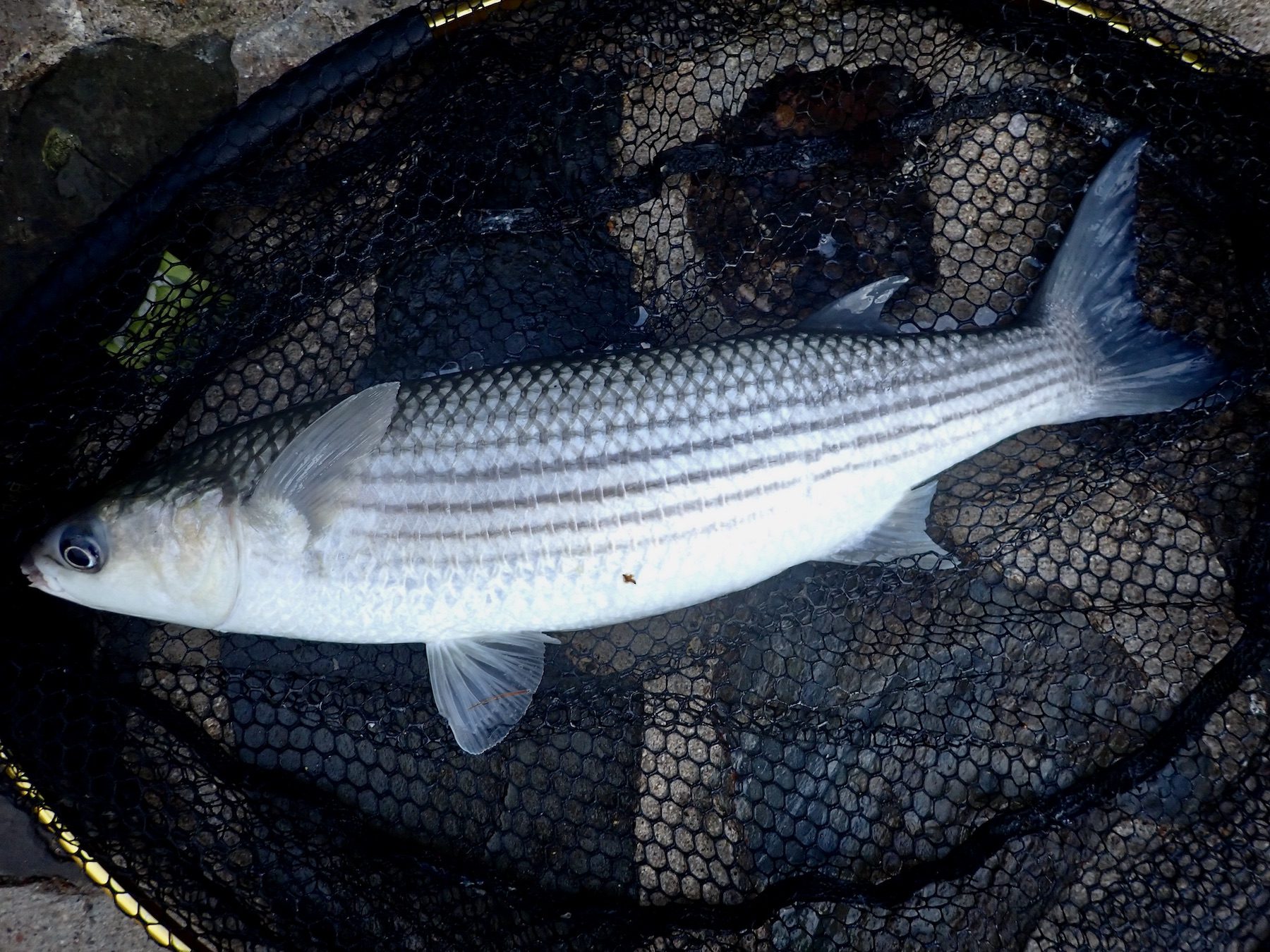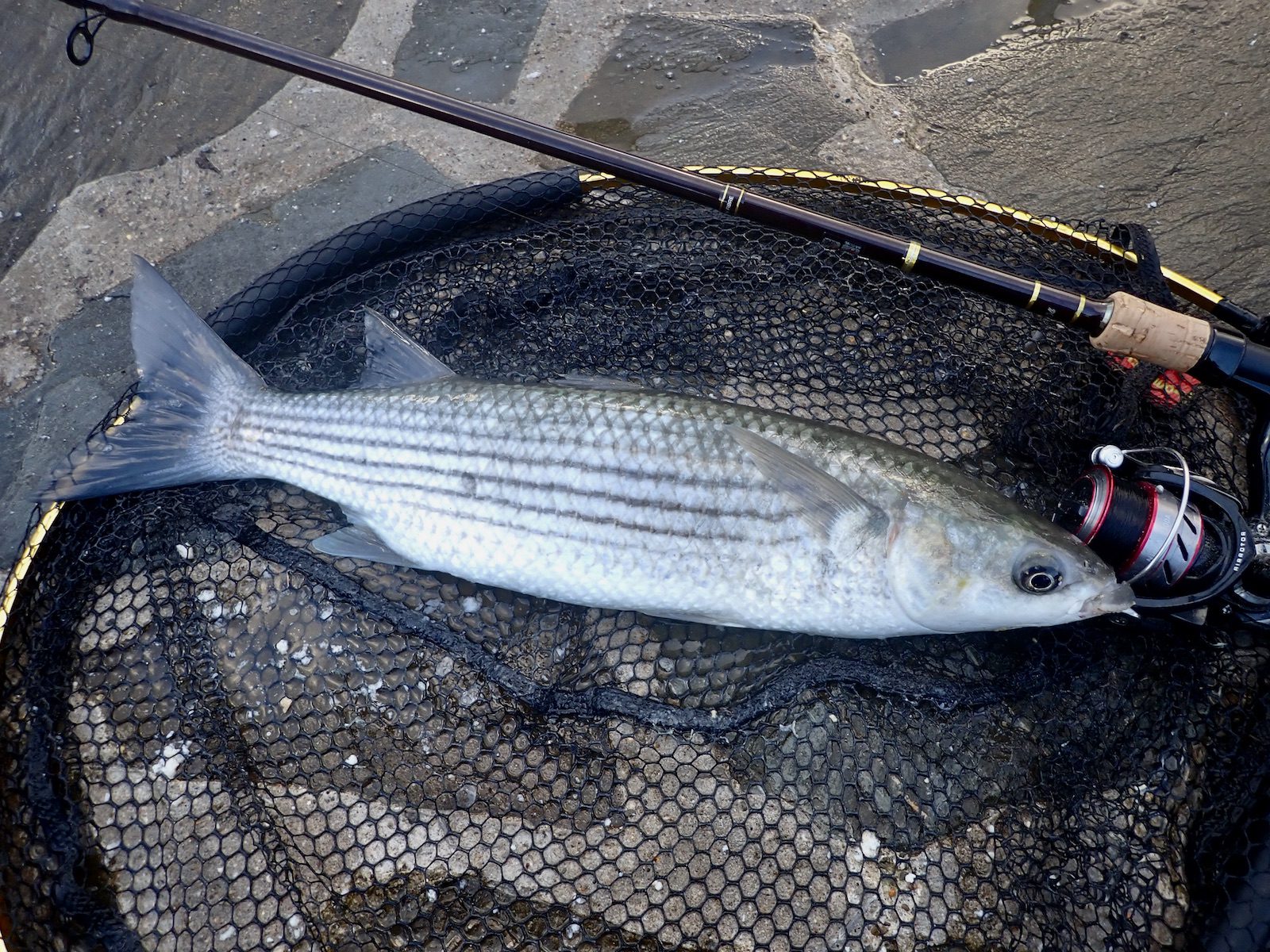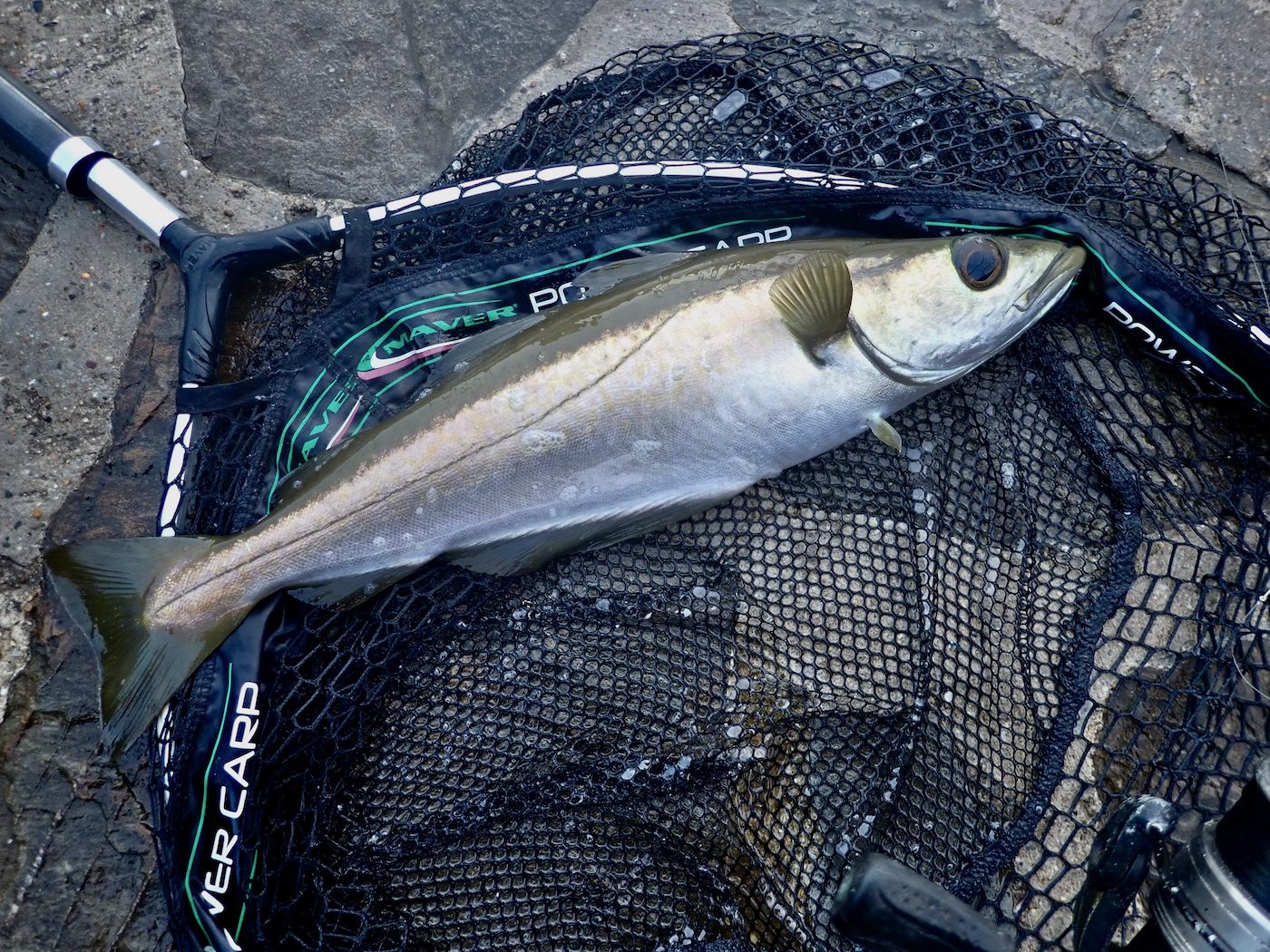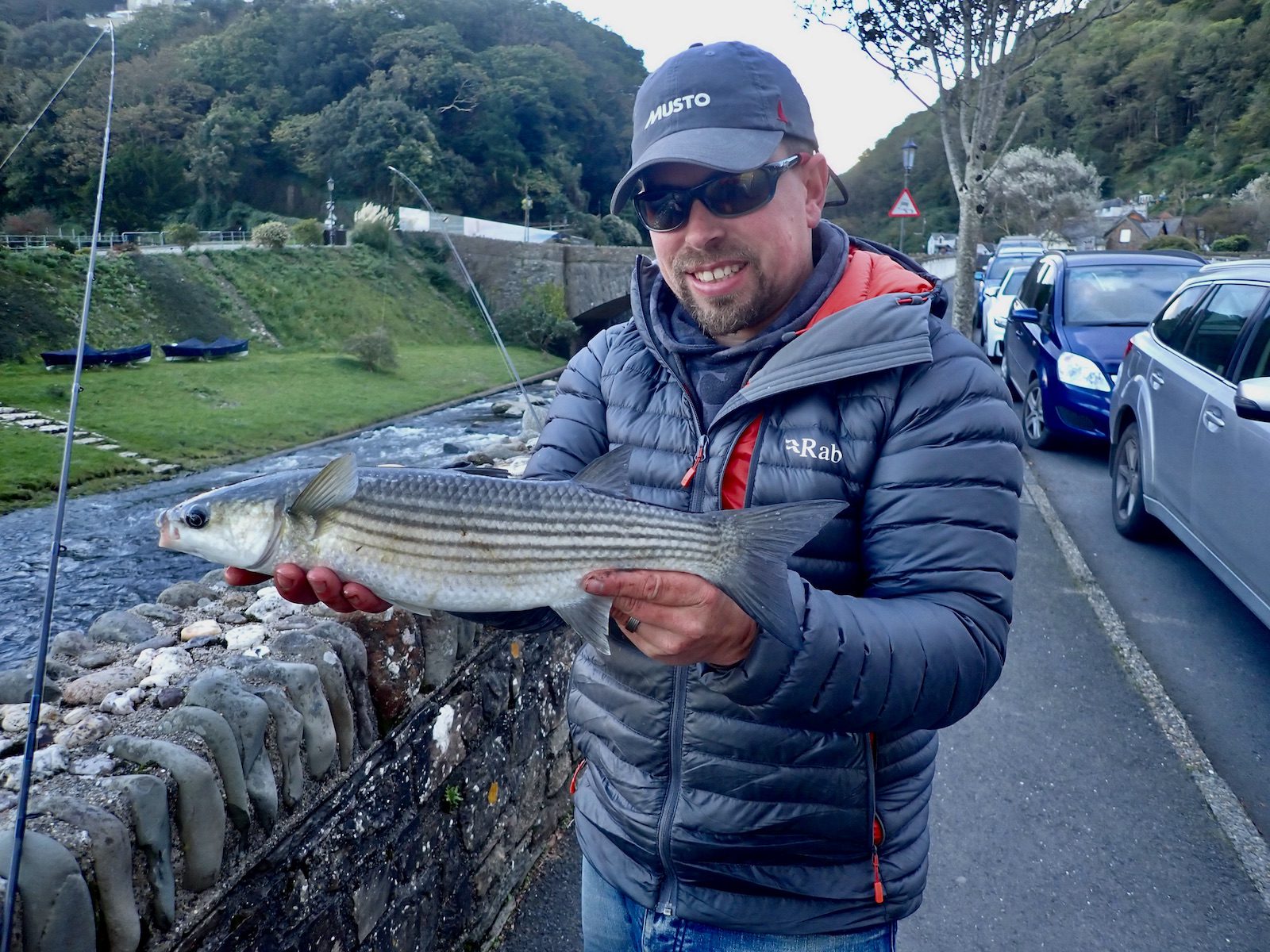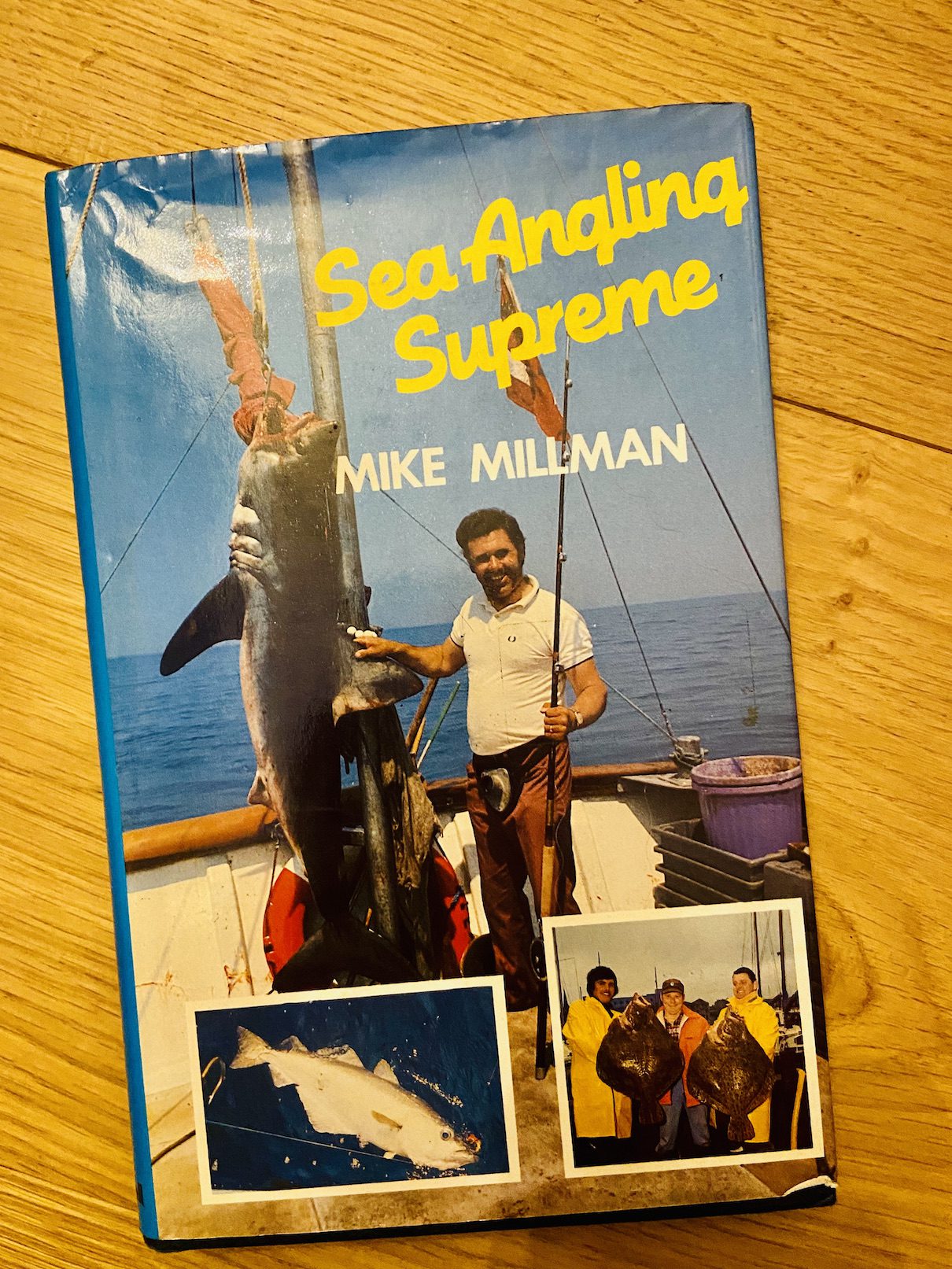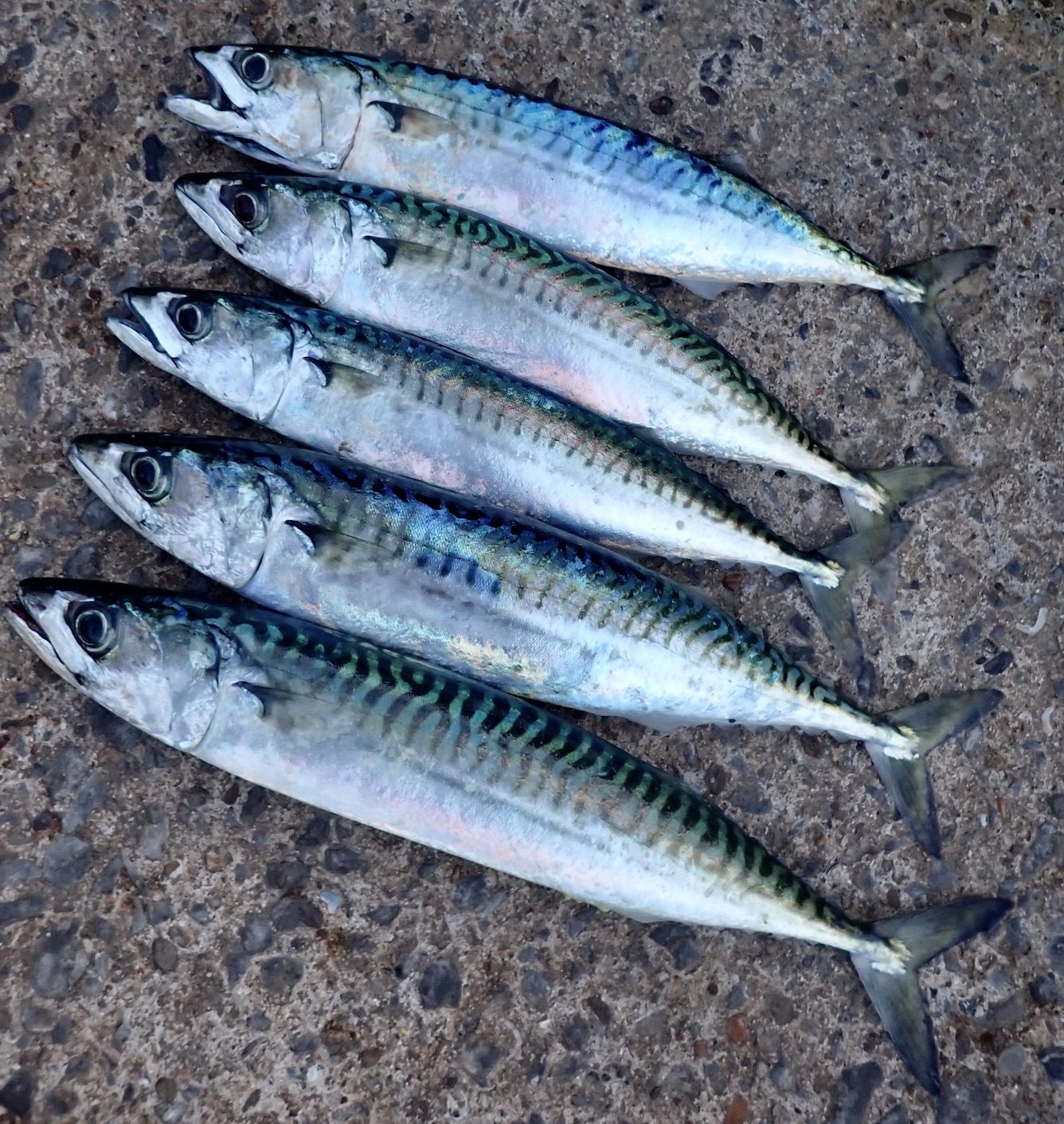Many thanks to our son James Thomas for providing this vivid account of our trip in search of tuna off the Cornish Coast.
Arriving in the harbour of Looe with the sun glistening off the water was a great sign for the days fishing ahead. However, the evidence of recent storms was still prevalent with sea weed scattered across the beach.
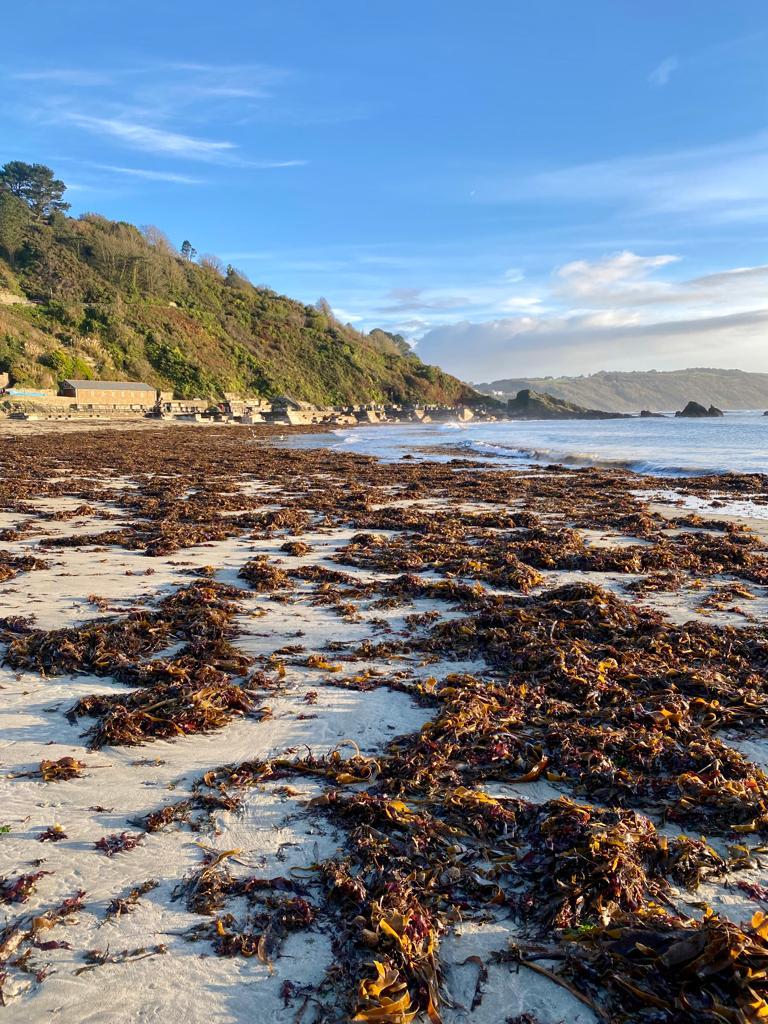
A quick visit to the pasty shop to stock up for the day and we were ready to board Sowenna. As we waited on the quayside fellow anglers Jeff Pierce and James Coggan turned up and we were all full of excitement and anticipation of the day ahead.
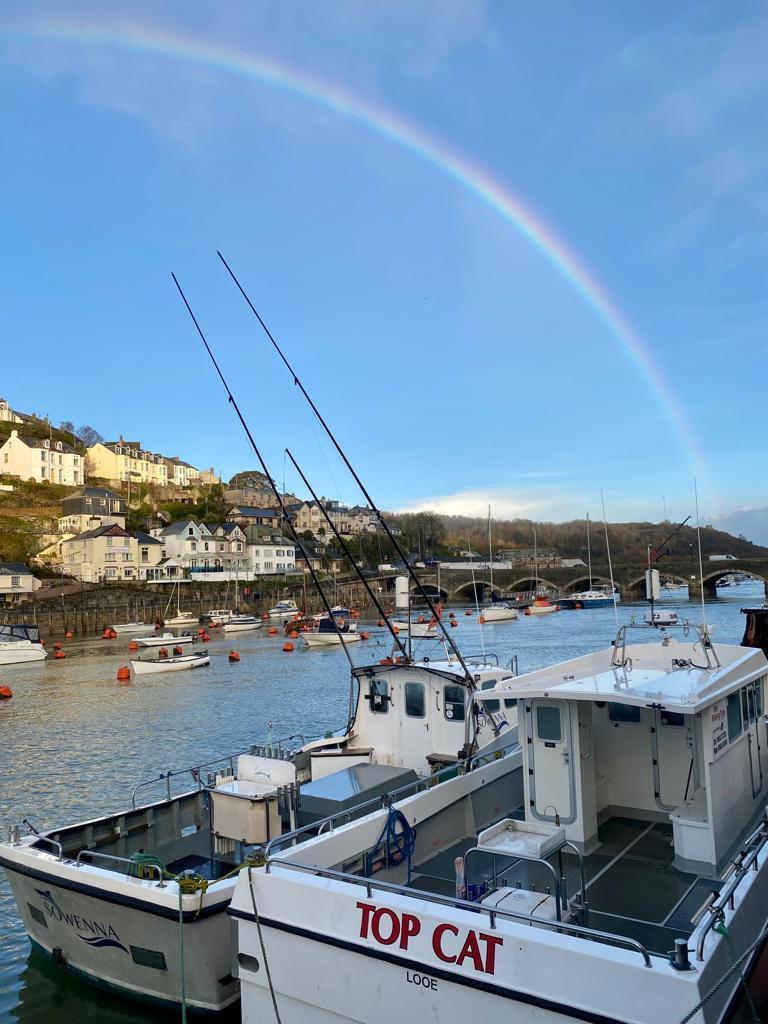
A rainbow 🌈 hung across the river, again a sign of the inclement and changeable weather that November often brings. We were all feeling fortunate to be heading out to sea with the chance of an encounter with a bluefin tuna.
Climbing down the ladder and stepping aboard we met the team Dan Margetts and John McMaster who were very welcoming and busy preparing the boat and fishing tackle ready to head out to sea. Having never been tuna fishing before I was marvelling at the tall booms that are setup to trail squid lures behind the boat and the sheer size of the reels on the rods that were shining in the sun. As we left the harbour we chatted about how we were going to play the day and I was extremely grateful and a little nervous that I was given the opportunity of the first fish. Thank you to Jeff, James and my Dad for allowing me pole position on the day and the chance of a fish of a lifetime.
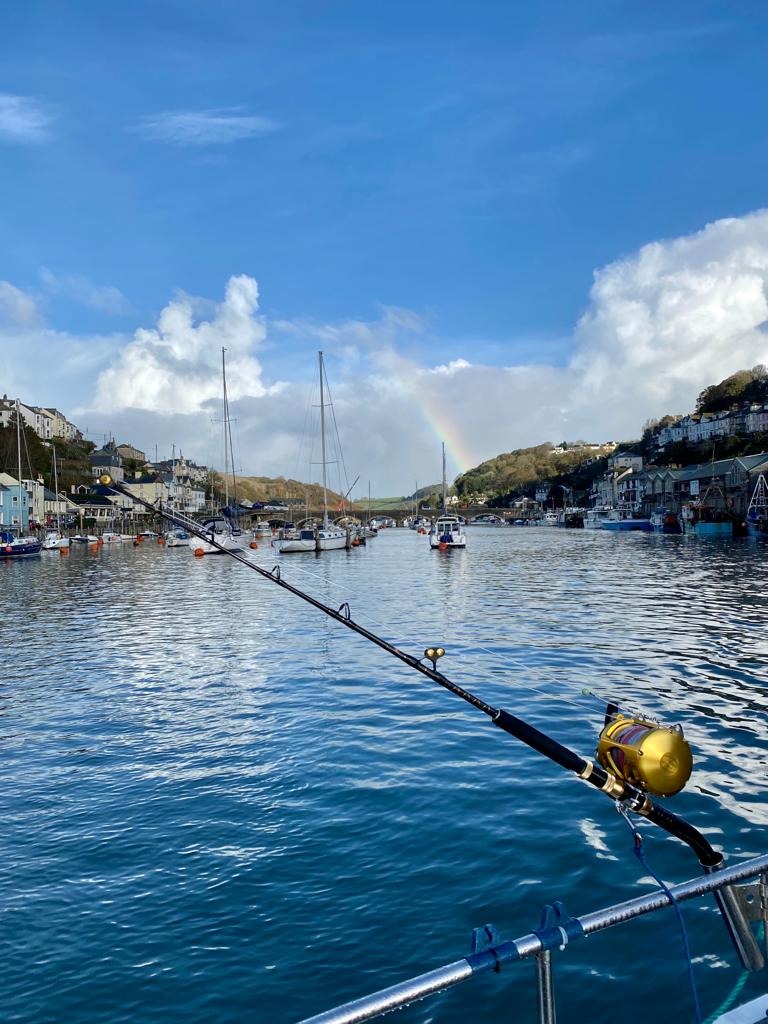
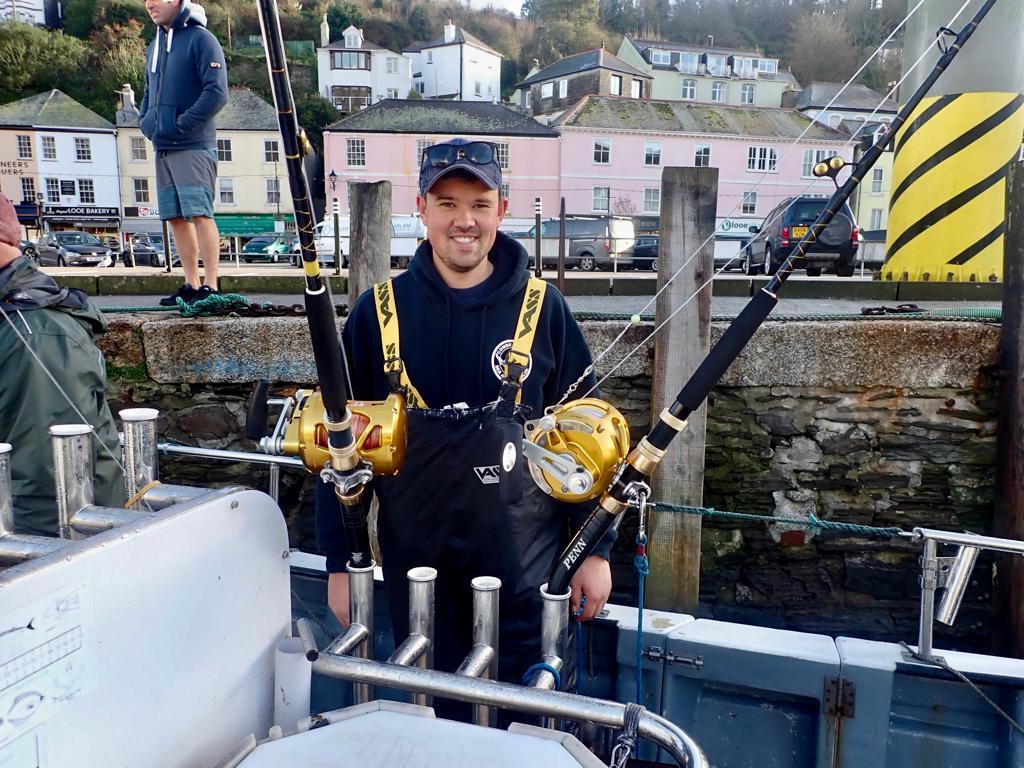
We headed out past Looe island with Dan at the helm chatting through the plan for the day. John set about explaining to me how to get ready to play a tuna; harness on and make sure you’re ready at all times as if one takes it’ll all happen in a flash. The main thing is to not give the fish any slack line and keep steady pressure on at all times.
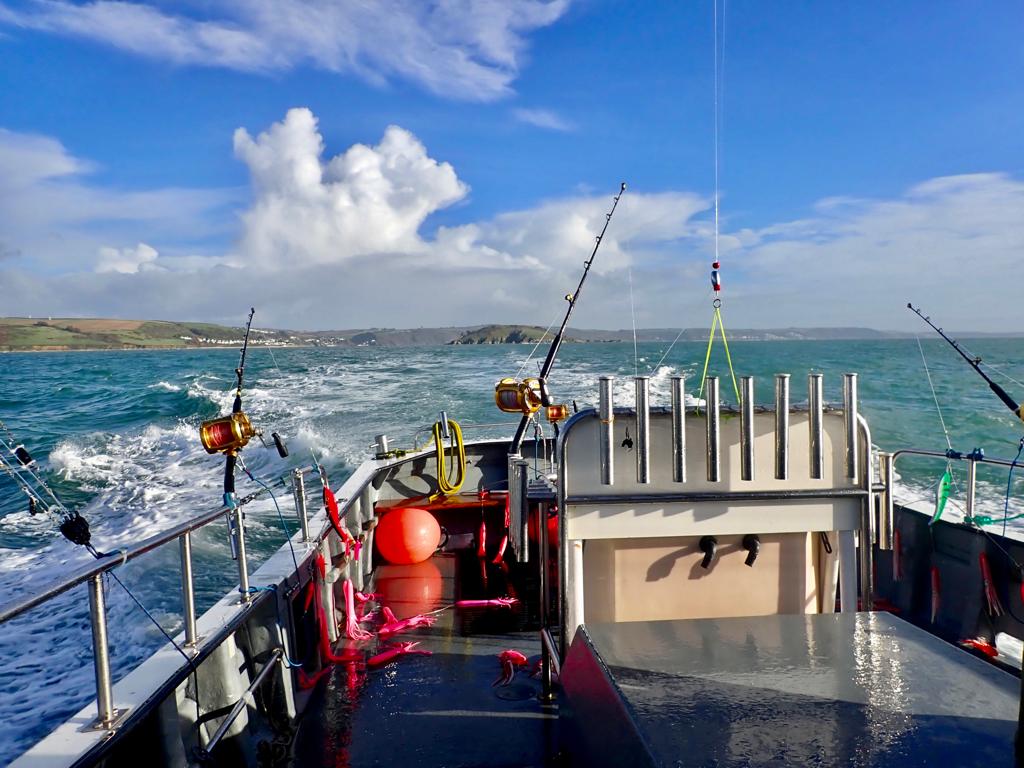
My memories of fish I had lost in the past through bad angling started to resurface in my head; a huge halibut that had broken free in Norway due to a bad knot and a couch’s bream I lost after a clutch malfunction. I think it is more curiosity of what these fish would have looked like and how much they would have weighed and the missed opportunity that does pain anyone that has lost a significant fish that was the target of an adventure. Sometimes you only have one shot as an opportunity presents itself for a catch and you want to do everything you can to secure the prize.
As an infrequent and novice angler I was feeling the pressure of being given first opportunity of the day and determined if I did get a chance of a tuna that I wouldn’t mess it up due to a lack of concentration.
The hard work and passion of the crew aboard Sowenna was evident and the dedication to be able to target bluefin tuna through the CHART programme and the hours at sea certainly cannot be underestimated. After an hour cruise into rougher waters, we were ready to start fishing. The method involves trolling for the fish with the engine continually rumbling away. The large booms were sent out and the line carefully played out on the reel until 4 rods were all fishing with the lures trailing behind the boat carefully arranged to avoid any tangles. The swell was gently rolling the boat with the odd slightly bigger wave chopping into the side bringing on the feeling of your stomach rising and the occasional clatter of crockery being moved around inside the cabin.
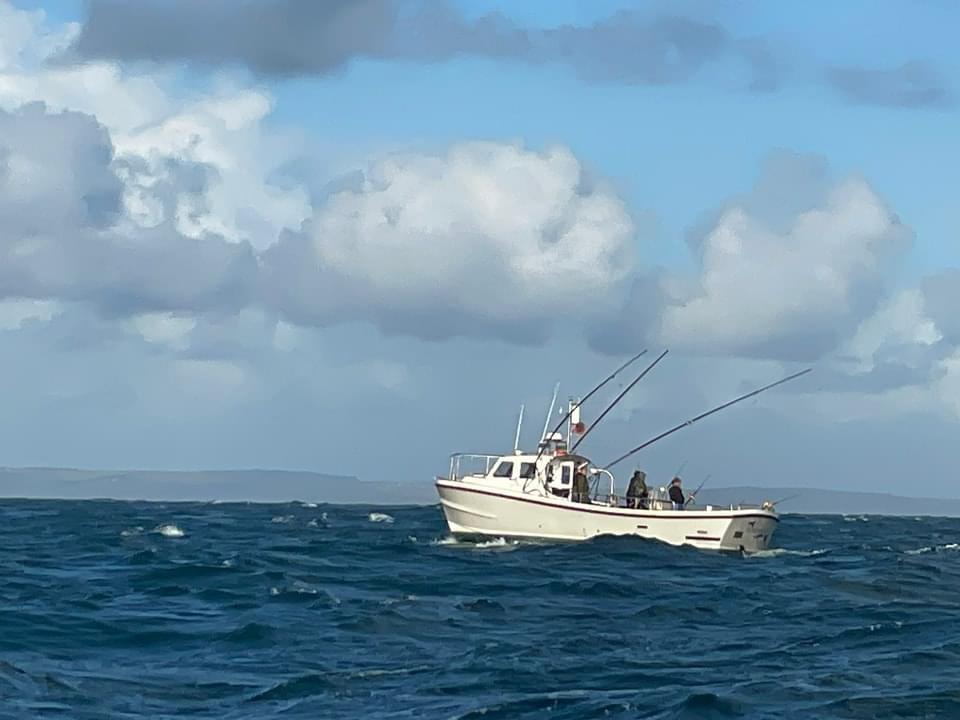
Stories of previous fishing trips were flowing and Dan decided to put out the shout for a cuppa tea. With that the Rod at the back of the boat bent over and the reel screamed off. John and I rushed to the stern and the reel then stopped screaming momentarily, had it come off? John’s experience kicked in as he wound the reel furiously to take up the slack line. The fish had started swimming towards the boat which is a nerve wracking situation as this could create slack line with a chance of the hook popping out. John regained control and passed the rod and reel over to me. The fish then set off on a charge peeling line off the reel with ease.
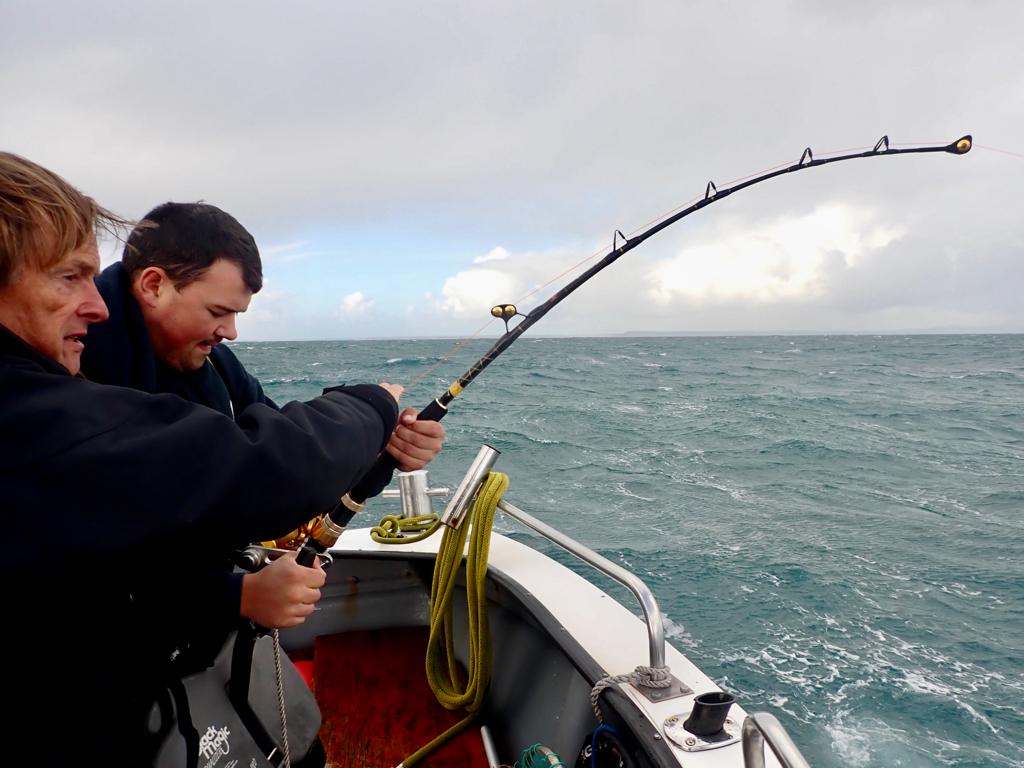
I was thinking of the battle and how long it would take to regain this line and I knew that a lot of effort and concentration would be required. The fish turned several times trying to create slack line but every time I managed to stay on top of the fish; I think spurred on by memories of previously lost fish. On this occasion, the tackle was expertly put together by Dan and John so an equipment failure was unlikely meaning it was up to me to stay in the moment and focus on the rod, reel , line and fish.
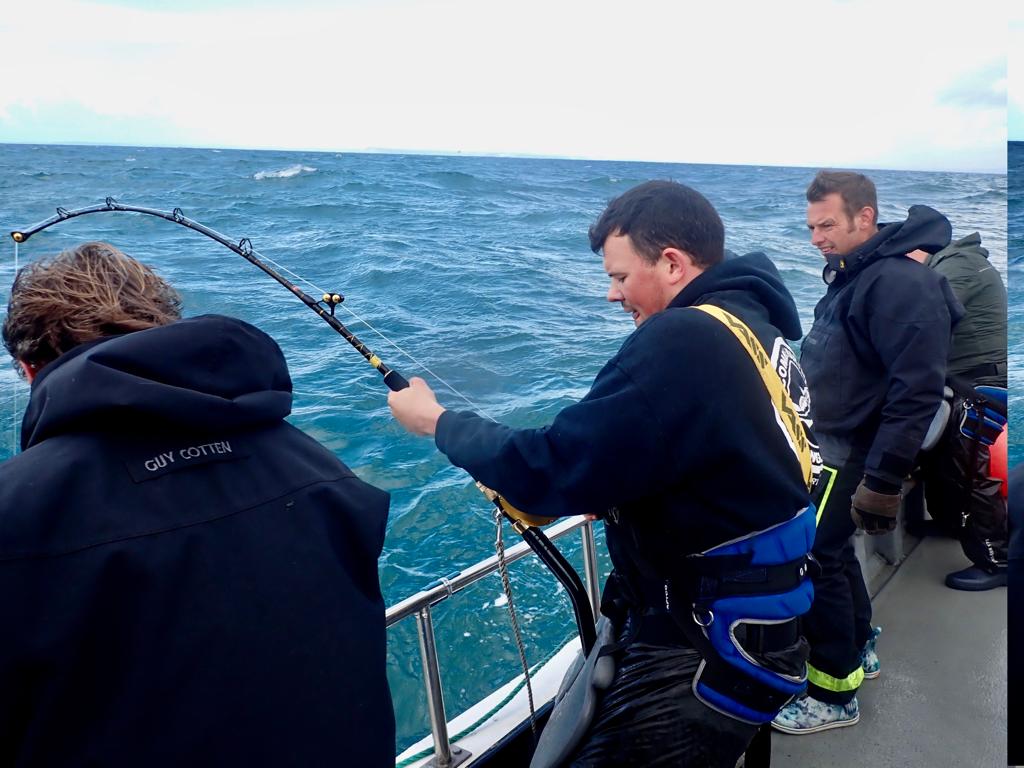
The next 25 minutes it was like the rest of the world had disappeared and all that mattered for that brief battle was hauling the fish in. Modern day life is so busy it’s rare to find a zen moment where you can truly switch off. I think that’s one of the things that draws people, including me, to amateur sport, whether that is negotiating a tricky section on the mountain bike, batting or bowling in a tight cricket match, felling a large tree or playing in a fish. It’s during the period of truly being in the zone with the adrenaline pumping that I feel most alive.
After around 20 minutes of slowly gaining using the rolling sea to my advantage and the harness setup to slowly gain back line that the fish had earlier furiously stripped from the reel, the leader was in sight. After several circles around the boat the fish came into view for the first time; a lean magnificent silver bar full of muscle.
A short time later, the fish was secured alongside, a relieved feeling that I hadn’t let myself or the others on the boat down was the overwhelming emotion and a pure admiration for such a huge powerful creature that we were all grateful to witness and have a close encounter with.
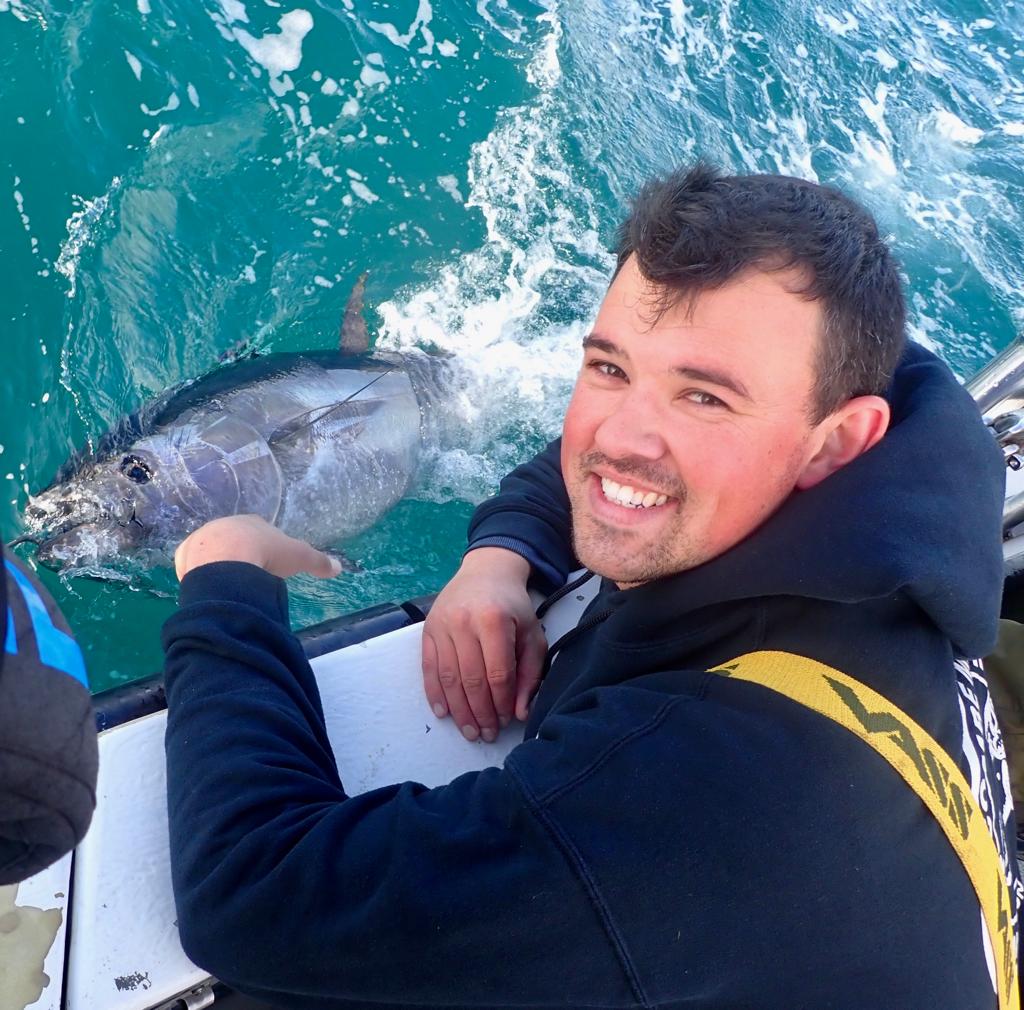
The recovery of the fish began with it held steady next to the boat with time for some photos and for the fish to be tagged as part of the CHART program for scientific research which will be used to learn about the distribution of fish and their migration back into British waters.
I opened the door, staring at the fish and wondering how old it might be and how far it may have travelled. As I looked up to the camera one of the infrequent waves with a little more chop rolled in and covered me in icy cold water.
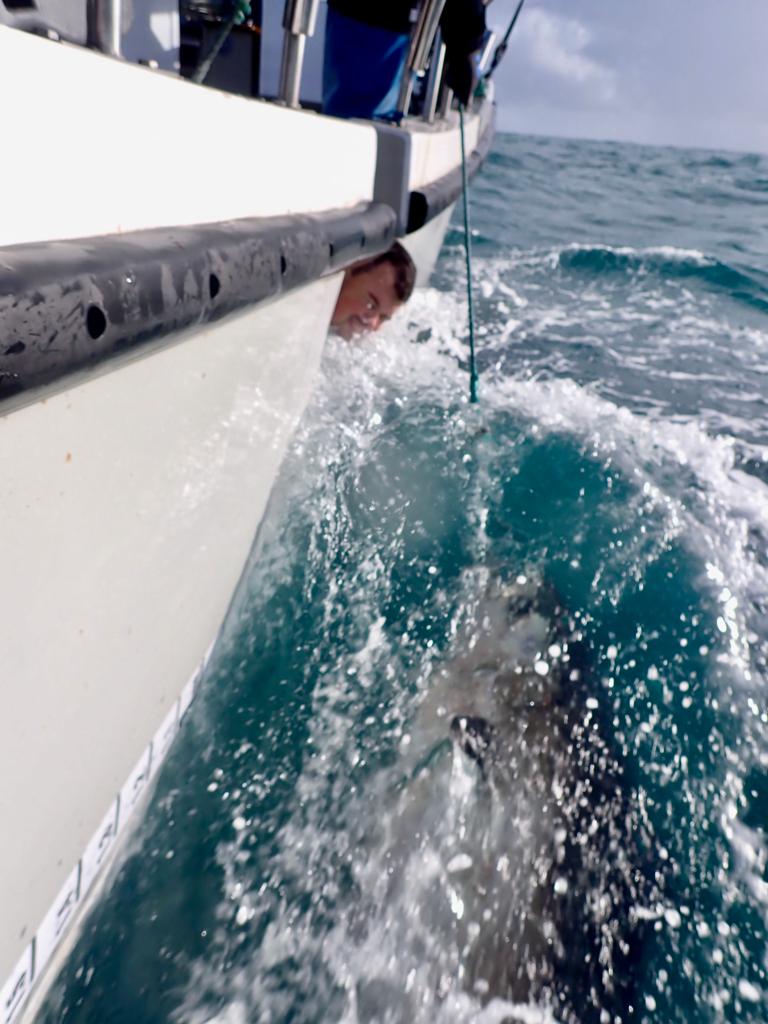
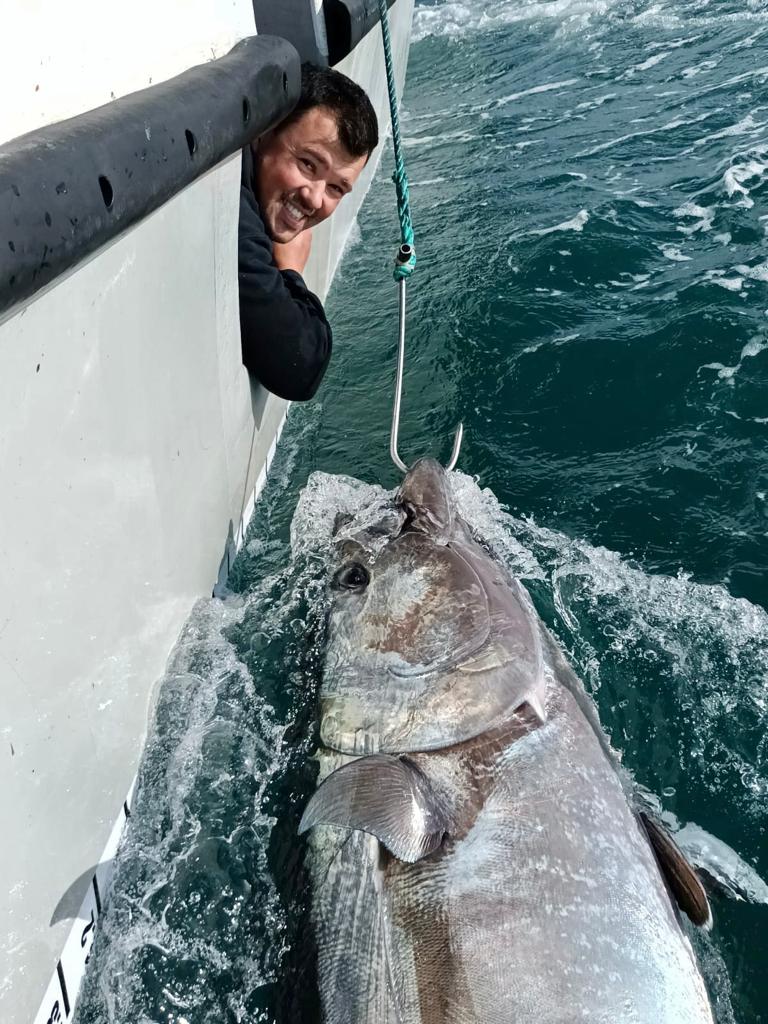
After regaining my composure, a few good photos were captured and we were ready to release the fish back to the depths of the ocean. With a powerful turn the fish swam out of sight. As someone recently said fishing trips are often about the memories that are made and this is certainly one that will live with me. The rest of the day passed by and I was gutted that no-one else had the opportunity to hook up with a tuna and felt a little guilty that I had been given the only chance of the day.
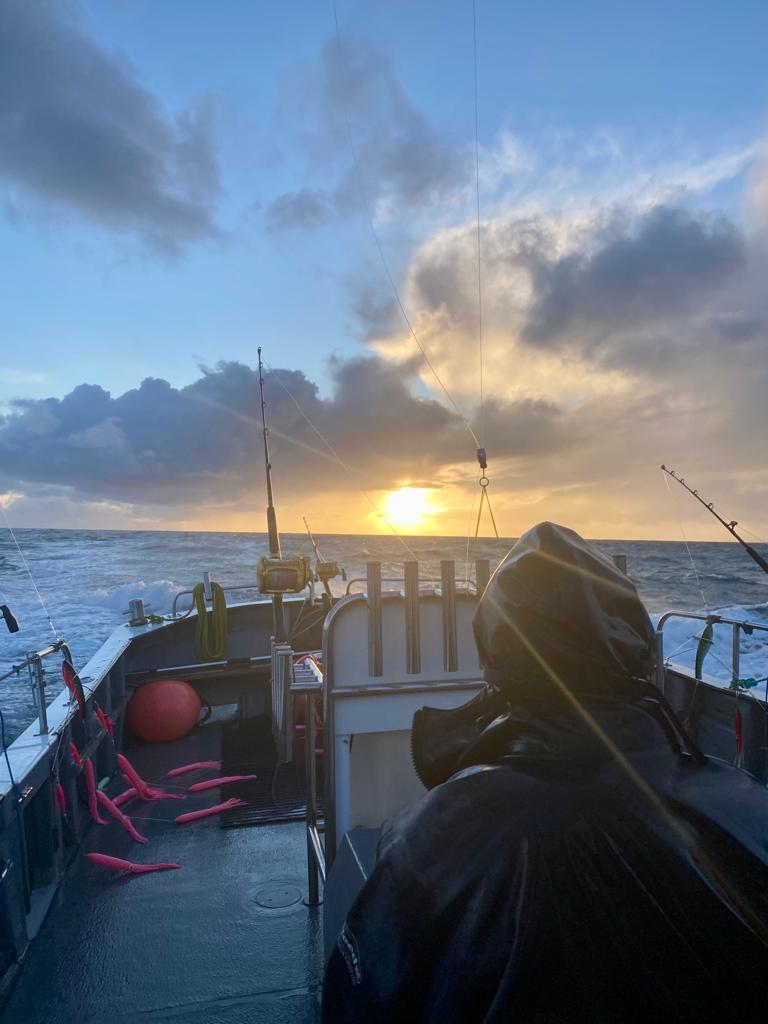
My dad had said before that if he had caught a tuna he would have retired from tuna fishing. Dan joked that he would make sure he was always number 4 so that he had to keep coming back. As we headed back to the harbour the light began to fade and thoughts started to turn to the journey home and the week of work ahead. Another adventure over and more great memories made! Thanks to Jeff, James, Dan, John and Dad for making it such an enjoyable trip; a trip I’ll never forget.
